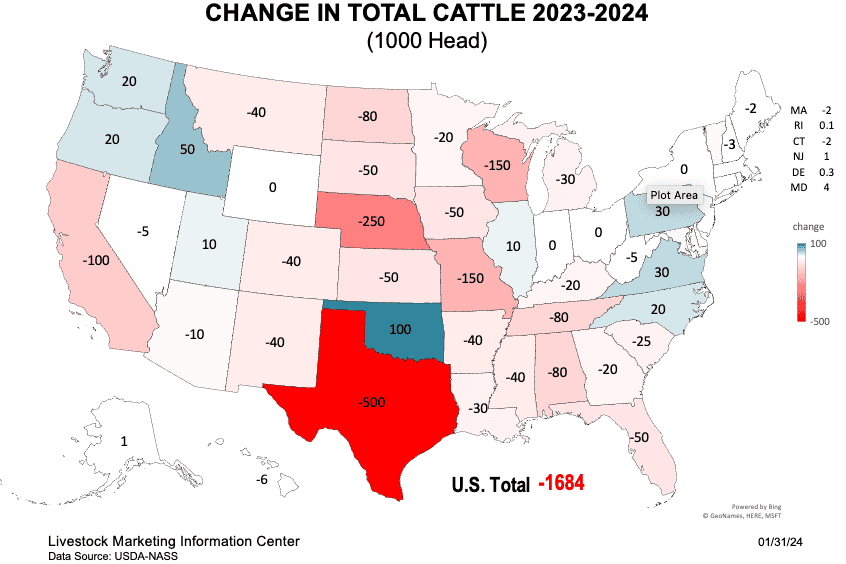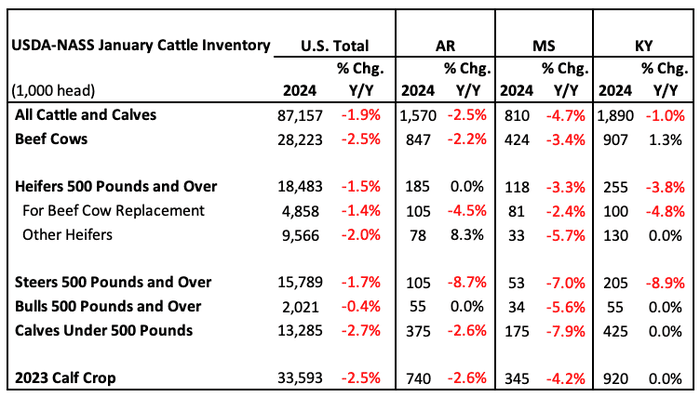
The latest USDA-NASS January Cattle Inventory report is the most comprehensive look at the cattle industry, providing a look at what producers did in 2023 and a preview for 2024.This week’s article looks at the state-level inventory data for Arkansas, Kentucky, and Mississippi compared to U.S. cattle numbers.

The report reveals that all three states — Arkansas, Kentucky, and Mississippi — align with the national trend of herd reduction. In Arkansas, there was a 2.5% decrease in all cattle and calves, bringing the total to 1.570 million head. Mississippi’s inventory saw a 4.7% decline to 810 thousand head. Kentucky’s numbers fell by 1.0%, totaling 1.890 million head. These figures represent a steeper decline than the national average of 1.9%.
Inventories of beef replacement heifers are one indicator of whether producers are considering herd expansion. There was a notable decline in 2024 replacement heifer numbers. Mississippi and Kentucky saw declines of 2.4% and 4.8%, respectively, in this category. Beef replacement heifer inventories totaled 104 thousand heads, down 4.5% compared to 2023.
Nationally, beef replacement heifer inventories declined by 1.5%. One of the bigger surprises in the report was the revision that USDA made to the estimate for January 2023 beef heifer inventories. According to the revised estimates, beef heifer inventories declined 10.1% to 4.858 million in 2023. In the January 2023 report, beef heifer inventories declined 5.8% to 5.164 million head. That’s a significant revision and has important implications for the prospect of herd expansion.
All of the cattle inventory data for Arkansas, Kentucky, and Mississippi is reported in the table below. The theme is consistent across classes of cattle. The numbers illustrate how impactful the drought was last year in the Southeast. If there’s another surprise in the report worth mentioning, it’s Kentucky’s inventory data. Kentucky was not spared from last year’s drought, and the cull cow auction data would suggest a decline in the state’s cow herd. But, according to the report, beef cow numbers increased by 1.3%, and last year’s calf crop was comparable to 2022.

Source: University of Arkansas
About the Author(s)
You May Also Like




